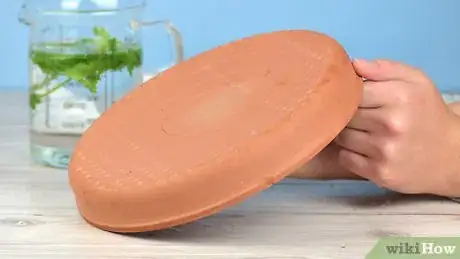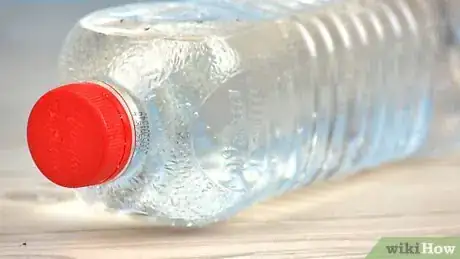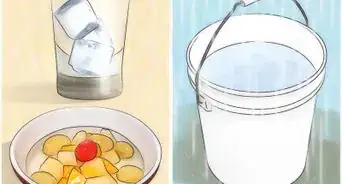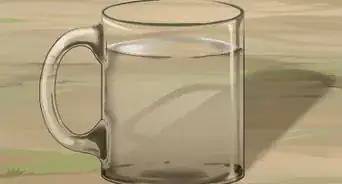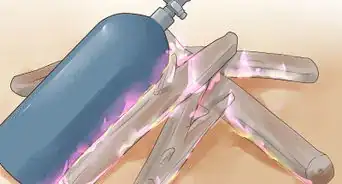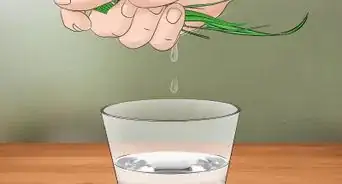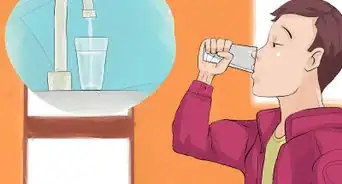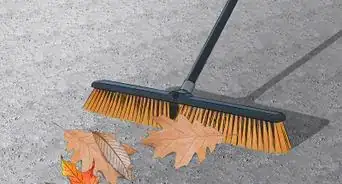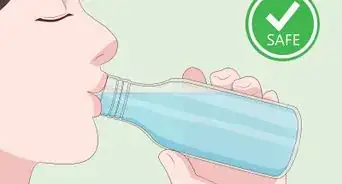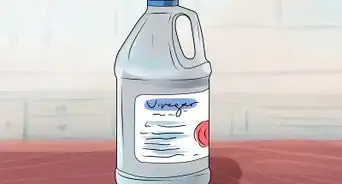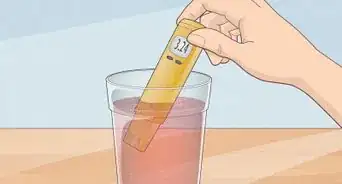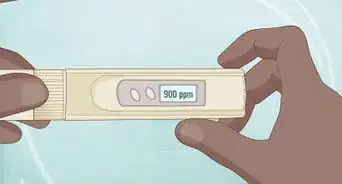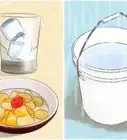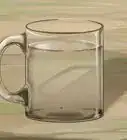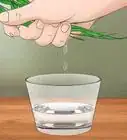This article was co-authored by wikiHow Staff. Our trained team of editors and researchers validate articles for accuracy and comprehensiveness. wikiHow's Content Management Team carefully monitors the work from our editorial staff to ensure that each article is backed by trusted research and meets our high quality standards.
There are 9 references cited in this article, which can be found at the bottom of the page.
The wikiHow Video Team also followed the article's instructions and verified that they work.
This article has been viewed 3,068,414 times.
Learn more...
Purifying water can be done through a variety of methods, like using a filter, treating with chemicals, or boiling. Water should be purified whenever you have reason to believe that it could be contaminated. Typically, this is necessary if you are camping in the wilderness or your home water source has been compromised. Whatever the reason, purifying water will remove any sediments and contaminants, as well as kill any germs, so that you can enjoy clean water without worrying about getting sick.
Steps
Treating Water with Chemicals
-
1Use water purification and disinfection tablets. Water purification tablets are made of either chlorine dioxide or iodine and kill bacteria and viruses in water. To use these tablets, fill a pitcher or jar with water and add enough tablets to treat the water. One tablet typically treats 1 quart (1 L) of water. These tablets generally need anywhere from 30 minutes to four hours to work.[1]
- Purification tablets do not treat water contaminated with protozoa or chemicals.
- Iodine tablets are generally not suitable for pregnant women or people with shellfish allergies.
-
2Clean the water with a small amount of bleach. Bleach can be used to kill viruses and bacteria in water, but it’s important to use only small amounts to avoid poisoning. Bleach must not be expired in order to work effectively. To purify water with this chemical:[2]
- Fill a pitcher or jug with water
- Add four drops (1/16 teaspoon) of bleach per quart (liter) of water
- Shake or stir the mixture
- Let the mixture sit for 30 minutes
Advertisement -
3Purify with iodine. Plain liquid iodine can also be used to kill pathogens in water, but many people are turned off by the taste. To clean water with iodine, simply collect the water and add a 2 percent iodine solution. Stir in four drops of iodine per quart (liter) of water and let it sit for 30 minutes.[3]
Filtering out Contaminants
-
1Use a commercial water filter. A commercial water filter is the easiest and most effective way to filter sediment, pathogens, metals, and other pollutants from water. These filters contain special materials like charcoal, carbon, ceramic, sand, and cloth that are specially designed to filter out dangerous pollutants.[4] There are many different types of filters you can use, including:
- Whole-home filters that filter all the water that comes into your house
- Point-of-use filters that get installed on specific taps and filter water that comes out of the faucet[5]
- Countertop filters that you fill manually with water
- Water bottles and straws with built-in water filters[6]
- Handheld UV water purifiers that kill bacteria, viruses, and other contaminants from small quantities of water
- Refrigerator filters, deionizers, and certain water tanks (like Brita or Pur) can further purify water so it is safe and tastes good
-
2Filter out pathogens with pine trees. Certain plants are effective at removing pathogens from water, and pine trees are among the best. To remove viruses and bacteria from your water, remove a small branch from a pine tree. Strip the bark from the stick and place the bare stick into a bucket. Slowly pour the water, letting it trickle onto the stick and into the bucket.[7]
- As the water flows over the sap inside the stick, the sap will trap and collect pathogens in the water.
-
3Remove heavy metals with cilantro. Just as pine trees are effective at removing pathogens, so too is cilantro excellent at removing heavy metals from water. Fill a pitcher with water and place a handful of cilantro leaves into the pitcher. Stir the water and let the leaves sit in the water for at least an hour. Remove and discard the cilantro before drinking the water.[8]
- Cilantro has been shown to be effective at removing lead and nickel from water, but it has not been tested for other heavy metals like arsenic and mercury.
-
4Drain the water through a clay pot to remove bacteria. Clay and ceramic are porous materials that allow water to drain through, but they trap bacteria, protozoa, and sediment. Because they trap these contaminants, clay pots can be used to purify water, especially water contaminated with E. coli.[9] To purify water with a clay pot:[10]
- Place the bottom of a clay pot on top of a jar or bucket with a similar sized opening
- Fill the clay pot with water
- Allow the water to soak the pot and trickle through the clay, filling the jar below
Killing Pathogens with Heat or Sunshine
-
1Boil the water. Boiling is a great way to kill bacteria, viruses, and parasites from water. Fill a pot with water and heat it over medium-high heat, or over a fire. Bring the water to a boil and let it sit at a rolling boil for about 10 minutes. Let the water cool before drinking.[11]
- Water purification typically happens after three to five minutes, but especially at higher elevations, you must boil the water for longer.
- Boiling alone will not remove heavy metals or chemical contaminants from water, but boiling the water with the inside of a cactus could remove additional pollutants, such as arsenic.[12]
-
2Distill the water with a solar still. Distillation is an effective way to remove many contaminants from water, including heavy metals, pathogens, salt, and even radiation. You can build your own solar still to collect and distill groundwater. All you need is a jar to collect water, a shovel, and a sheet of plastic.
- A solar still will work best in damp soil that has lots of moisture to collect.
- To make the still so you don’t have to take it apart, insert a drinking straw or tube into the container.[13]
-
3Use the SODIS method. SODIS is an acronym for solar water disinfection, and when done properly, it’s a very effective method for killing pathogens in water. Fill a clear and smooth plastic bottle with water. Twist on the lid, and place the bottle on its side in direct sunlight for six hours to kill parasites, bacteria, and viruses.
- This method works because the plastic acts to trap heat from the sun inside the bottle, and the UVA rays pasteurize the water.[14]
Removing Large Particulates
-
1Strain the water. For water that’s contaminated with large particles like pebbles, insects, plant matter, or dirt, you can strain out the contaminants.[15] Line a fine-mesh strainer with muslin, cheesecloth, a clean dish towel, or even a clean cotton shirt. Place the strainer over a bowl, and pour the water through the strainer to remove the particles.
- Note that straining the water like this will only remove large particulates, not pathogens, heavy metals or other contaminants.
-
2Make your own filter. You can also make your own water filter to remove large sediment from water. You will need some supplies, but you can also use alternatives if necessary, including:
- Use birch bark curled into a cone in place of the bottle and cap
- Use a shirt or towel in place of the coffee filter
- Use nuts, roots, or grass in place of the filtration materials[16]
-
3Use sedimentation. When you don’t have access to anything that you can use to filter the water, you can remove large particulate from water by letting it settle. Collect the water in a bowl or jar. Leave the water to settle for one to two hours. During this time, heavier particles will sink to the bottom, and lighter material will float to the top.[17]
- To remove lightweight particles, skim them from the surface of the water.
- To remove heavier sediment, gently and slowly pour the water into a clean bowl or jar. Stop pouring before you get to the bottom, as this will leave the heavier sediment behind in the original container.
References
- ↑ http://www.outdoorlife.com/photos/gallery/2015/01/survival-skills-10-ways-purify-water
- ↑ http://all-about-water-filters.com/great-ways-how-to-purify-water-for-drinking/
- ↑ https://survivalist101.com/tutorials/preppers-guide-prepping-for-beginners/drinking-water-purification-methods/
- ↑ http://www.enviroalternatives.com/watermethods.html
- ↑ https://survivalist101.com/tutorials/preppers-guide-prepping-for-beginners/drinking-water-purification-methods/
- ↑ http://urbansurvivalsite.com/fastest-ways-to-purify-water/
- ↑ http://news.mit.edu/2014/need-a-water-filter-peel-a-tree-branch-0226
- ↑ http://healthland.time.com/2013/09/12/cilantro-more-than-an-herb-it-can-purify-water-too/
- ↑ http://inhabitat.com/6-ways-to-purify-water-without-expensive-technology/
- ↑ http://all-about-water-filters.com/great-ways-how-to-purify-water-for-drinking/
- ↑ http://urbansurvivalsite.com/fastest-ways-to-purify-water/
- ↑ http://inhabitat.com/6-ways-to-purify-water-without-expensive-technology/
- ↑ http://www.outdoorlife.com/photos/gallery/2015/01/survival-skills-10-ways-purify-water
- ↑ https://www.youtube.com/watch?v=jjzfhFUwr_8
- ↑ http://all-about-water-filters.com/great-ways-how-to-purify-water-for-drinking/
- ↑ http://all-about-water-filters.com/great-ways-how-to-purify-water-for-drinking/
- ↑ http://www.enviroalternatives.com/watermethods.html
About This Article
To purify water, start by straining out large particulates like pebbles, insects, or plant matter. Pour the water from one container to another, passing it through a mesh strainer lined with a dish towel. If you don’t have a strainer, pour the water into a container and let it settle for 1-2 hours. Skin lightweight particles off the surface of the water, then gently pour the water into a clean bowl or jar. Stop pouring before you get to the bottom so the heavier sediment will be left behind. Keep in mind that these methods will not remove pathogens or heavy metals from the water. Read on to learn how to purify water using chemicals!


